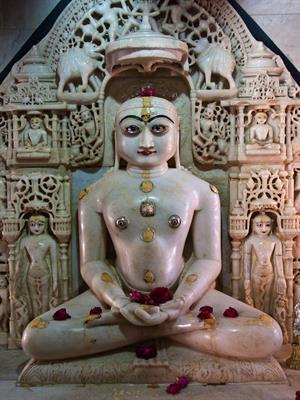
PUMPA - SMART LEARNING
எங்கள் ஆசிரியர்களுடன் 1-ஆன்-1 ஆலோசனை நேரத்தைப் பெறுங்கள். டாப்பர் ஆவதற்கு நாங்கள் பயிற்சி அளிப்போம்
Book Free DemoIntroduction
The period of the \(6^{th}\) century witnessed the rise of numerous ideological tenets in India, which was a result of religious domination exerted by the Brahmin Class, the dominant religion before the advent of new ideas and their proponents.
This dominant character of the Brahmin class led to discontent among the people of other classes, which pushed them towards the religions of Jainism and Buddhism.
The Jainism:
The tenets of Jainism are based on its teachers, whom they referred to as “Tirthankaras”. The religion of Jainism had “\(24\) Tirthankaras”, Rishabanath being the first of all the Tirthankaras.
Jain: The word “Jain” had been derived from the Sanskrit root word “Jina / Jaina” meaning the “Conqueror”. The religion Jainism is also considered older than the later religion Buddhism.
The Tirthankaras hold a special place in Jain culture as their teachings enlightened the minds of the downtrodden people. The greatest among the Jain Tirthankaras is Mahavira (\(24^{th}\) and the last Tirthankara). Parshavanath being the \(23^{rd}\) Tirthankara.
Vardhaman Mahavira:
Mahavira was born as Vardhamana Mahavira in \(\text{539 BC}\), near Vaishali in Kundagrama. Born in Gnatrika (A Kshatriya clan), he was brave and able to govern his kingdom. He was married to Yasoda and also had a daughter named Anojja or Priyadarshana.

Vardhaman Mahavira
He renounced his family life at the age of \(30\) in quest of spiritual knowledge. Mahavira left his kingdom and undertook intense meditation, and adopted an ascetic life to attain spiritual greatness.
Lion: According to the principles of Jainism, every Tirthankara or the Teacher has been associated with a symbol and Mahavira was associated with the symbol of Lion.
After undertaking strenuous efforts to attain spiritual greatness for \(12\) years, Mahavira attained “Kevaliya / Kevala” (The Knowledge of the highest order) at the age of \(42\) under the Sal tree.
Post the attainment of Kevaliya, Mahavira came to be known as “the Jina” means the “conqueror of the self”. Later the followers of his method were called “Jains”.
Triratnas of Mahavira:
Mahavira explained the knowledge that he had acquired through intense meditation using three principles for the understanding of the commoners. These are known as the “Tri-Ratnas or Three jewels of Jainism”.

Right faith: Believing and following the tenets of Jainism and Mahavira’s teachings.
Right Knowledge: Rejecting the theory of God’s existence and other Vedas and rituals.
Right Action: Denotes the five principles propounded by Mahavira in his teachings namely:
1. Speaking Truth
2. Not to steal
3. Follow Ahimsa
4. Non-Possession
5. Brahmacharya
The Jain Teachers:
The teachers of Jain principles are known by the name of Acharya’s who decided to codify the Jain literature to preserve the sacramental principles and the tenets of the religious leaders.
While most of the literary sources of the Jain teachings were lost over time, the Acharya’s resolve to regain the lost scriptures helped them retrieve a few.